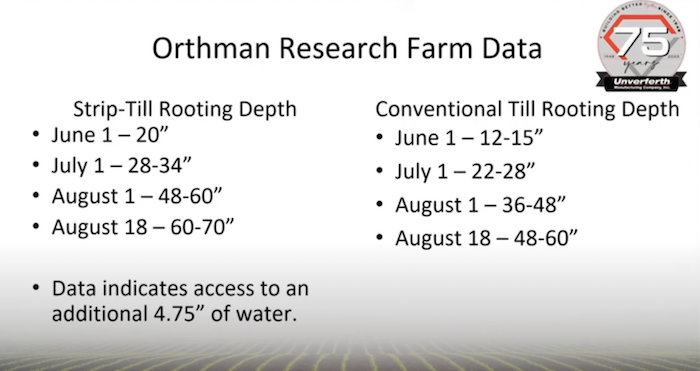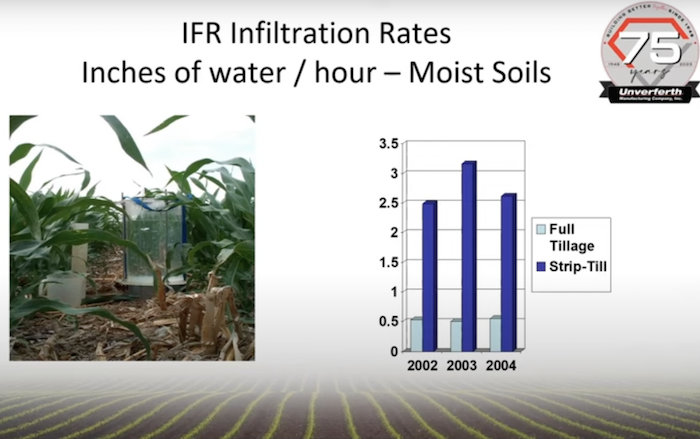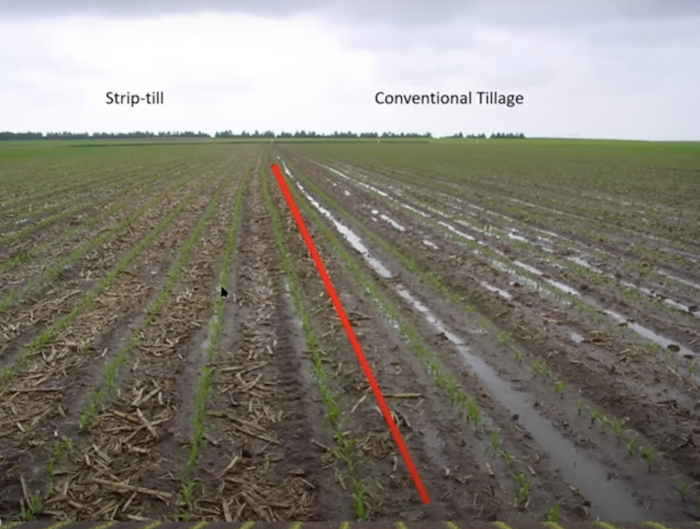Strip-till can help growers combat drought conditions by capturing water when it's available and conserving it for later use, as explained in detail by Unverferth agronomist Mick Goedeken during a recent Strip-Till Farmer webinar.
"I wish there was something out there that could magically help us improve our water infiltration. Gosh, if we had that we'd have it made in the shade. We kind of do — it's called strip-till," Goedeken says.
One of the biggest advantages of strip-till is its ability to remove the shallow compaction layer, which consequently leads to better water infiltration and expanded root growth, Goedeken says.

The greater root depth, as pointed out in the above graphic, leads to an additional 4.75 inches of access water in a strip-till system compared to a conventional system, according to Orthman Research Farm data.
"If we utilize 26 inches of water to produce a corn plant, and we're 8 inches behind, do you think that extra 4.75 inches will make a difference? Absolutely," Goedeken says. "Additional roots are able to access more water, and more water means more yield potential."

With more roots and less compaction, strip-till absorbs water much faster than a conventional system, as illustrated in the above chart.
"Strip-till water infiltration rates per hour are 2 inches more than conventional tillage on average," Goedeken says. "That's phenomenal, because we can utilize that 2 inches of water, rather than have it run off, or lose it to evaporation."
The picture below was taken shortly after a 1.5-inch rainfall. There's almost no standing water on the strip-tilled field (pictured left) thanks to a higher infiltration rate, whereas the standing water on the conventionally tilled field (pictured right) is susceptible to run off and/or evaporation, Goedeken points out. 
On the other side of the coin, Goedeken says that strip-till can also be advantageous in extremely wet conditions.
"If we break that compaction layer in the top 12 inches then we're going to allow water infiltration," he says. "If there's a compaction layer at 4-6 inches, the water is going to hit it and run off the field. Getting the water to go down into the soil profile opens up the possibility for the plant to produce more roots and higher yields."
WATCH: Mick Goedeken discusses what an ideal strip looks like and how it should react to different rainfall events.







